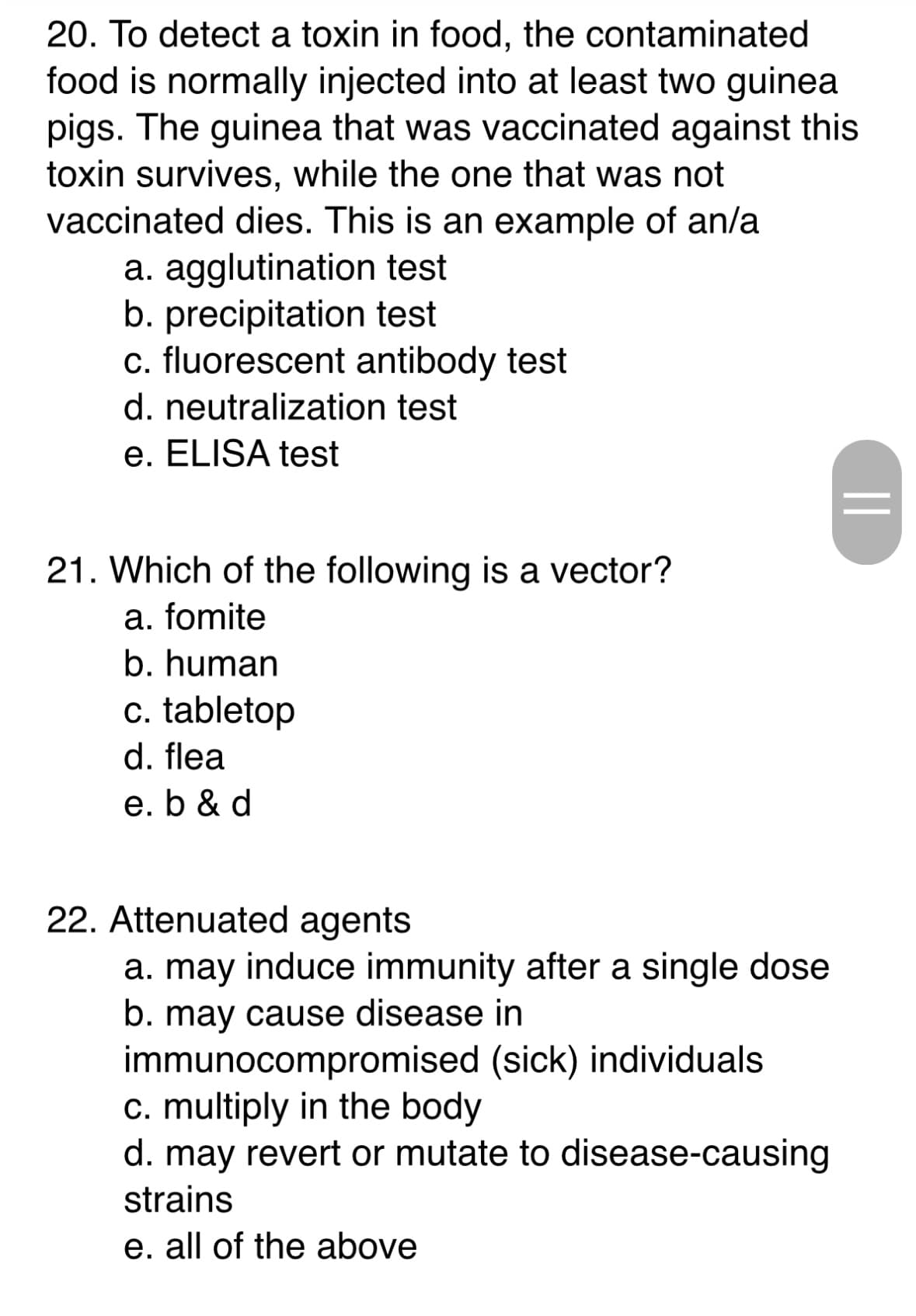20. To detect a toxin in food, the contaminated food is normally injected into at least two guinea pigs. The guinea that was vaccinated against this toxin survives, while the one that was not vaccinated dies. This is an example of an/a a. agglutination test b. precipitation test c. fluorescent antibody test d. neutralization test e. ELISA test 21. Which of the following is a vector? a. fomite b. human c. tabletop d. flea e. b & d 22. Attenuated agents a. may induce immunity after a single dose b. may cause disease in immunocompromised (sick) individuals c. multiply in the body d. may revert or mutate to disease-causing strains e. all of the above
20. To detect a toxin in food, the contaminated food is normally injected into at least two guinea pigs. The guinea that was vaccinated against this toxin survives, while the one that was not vaccinated dies. This is an example of an/a a. agglutination test b. precipitation test c. fluorescent antibody test d. neutralization test e. ELISA test 21. Which of the following is a vector? a. fomite b. human c. tabletop d. flea e. b & d 22. Attenuated agents a. may induce immunity after a single dose b. may cause disease in immunocompromised (sick) individuals c. multiply in the body d. may revert or mutate to disease-causing strains e. all of the above
Chapter17: Drugs And Dissection
Section: Chapter Questions
Problem 1MC
Related questions
Question

Transcribed Image Text:20. To detect a toxin in food, the contaminated
food is normally injected into at least two guinea
pigs. The guinea that was vaccinated against this
toxin survives, while the one that was not
vaccinated dies. This is an example of an/a
a. agglutination test
b. precipitation test
c. fluorescent antibody test
d. neutralization test
e. ELISA test
21. Which of the following is a vector?
a. fomite
b. human
c. tabletop
d. flea
e. b & d
22. Attenuated agents
a. may induce immunity after a single dose
b. may cause disease in
immunocompromised (sick) individuals
c. multiply in the body
d. may revert or mutate to disease-causing
strains
e. all of the above
||
Expert Solution
This question has been solved!
Explore an expertly crafted, step-by-step solution for a thorough understanding of key concepts.
This is a popular solution!
Trending now
This is a popular solution!
Step by step
Solved in 3 steps

Recommended textbooks for you

